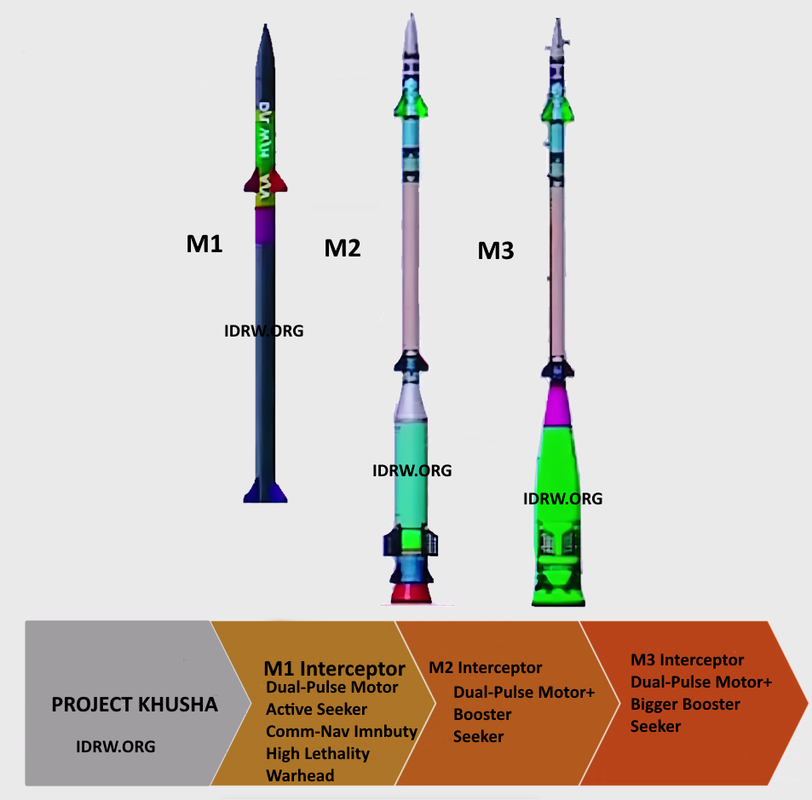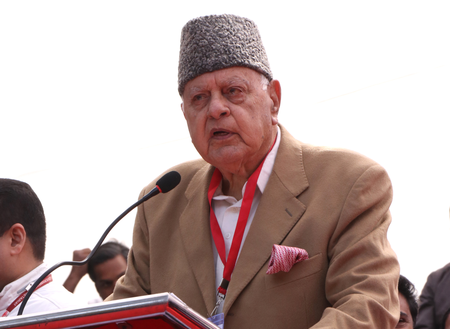SOURCE: AFI


New high-resolution satellite imagery has shed light on the significant impact of India’s airstrikes on Pakistan’s military infrastructure during Operation Sindoor, launched on May 7, 2025. The images, analyzed by geospatial intelligence researcher Damien Symon and shared via posts on X, reveal extensive damage to key Pakistan Air Force (PAF) facilities at Nur Khan and Murid airbases, underscoring the precision and intensity of India’s retaliatory strikes. The strikes were conducted in response to the April 22, 2025, Pahalgam terror attack in Jammu and Kashmir, which killed 26 civilians and was attributed to Pakistan-based militant groups.
Located in Rawalpindi, just 10 kilometers from Pakistan’s capital, Islamabad, Nur Khan Airbase is a critical hub for the PAF, housing transport squadrons, surveillance platforms, and aircraft like the C-130 Hercules, Saab 2000, and IL-78 mid-air refuelers. Satellite imagery dated May 23, 2025, shows that an entire 7,000-square-foot operations complex near the site of India’s May 10 strike has been demolished by Pakistani authorities. Earlier images indicated damage to two specialized military trucks, but the complete teardown of the complex suggests far more extensive internal and structural damage, likely rendering repairs unviable.
Continue readingSOURCE: AFI


The Defence Research and Development Organisation (DRDO) is gearing up for the highly anticipated first test of the M-1 missile under Project Kusha, India’s ambitious initiative to develop a long-range surface-to-air missile (LR-SAM) system. Scheduled to be launched shortly from Launch Complex-IV (LC-IV) at Dhamra, Odisha, the M-1 missile test marks a critical milestone in India’s quest to build a multi-layered air defense shield comparable to Russia’s S-400 Triumf and Israel’s Iron Dome.
Project Kusha, also known as the Extended Range Air Defence System (ERADS) or Programme Long Range Surface-to-Air Missile (PGLRSAM), is a DRDO-led effort to develop a transportable, long-range air defense system. Approved by the Cabinet Committee on Security (CCS) in May 2022 with an Acceptance of Necessity (AoN) in September 2023 for five Indian Air Force (IAF) squadrons at a cost of Rs 21,700 crore (US$2.6 billion), the project aims to deploy the system by 2028–2029. The system will complement existing platforms like the Indo-Israeli Barak-8, Russian S-400, and India’s Ballistic Missile Defence (BMD) system, bridging the gap between the MR-SAM (80 km) and S-400 (400 km).
Continue readingSOURCE: AFI


In a significant step toward enhancing the Indian Air Force’s (IAF) airborne surveillance and command capabilities, the Defence Acquisition Council (DAC) is poised to grant clearance for the procurement of six Netra Mk1A Airborne Early Warning and Control (AEW&C) aircraft. Announced on May 27, 2025, this development will see airframes sourced from Brazilian aerospace giant Embraer, with modifications carried out by the Centre for Airborne Systems (CABS) under the Defence Research and Development Organisation (DRDO). Valued at approximately Rs 9,000 crore, the acquisition aims to triple the IAF’s AEW&C fleet, addressing critical gaps in India’s air defense architecture amid rising regional tensions with China and Pakistan.
The Netra Mk1A is an advanced iteration of the DRDO-developed Netra Mk1 AEW&C system, which has proven its operational mettle in high-stakes scenarios like the 2019 Balakot airstrike and the recent Operation Sindoor on May 7, 2025. Mounted on the Embraer ERJ-145 platform, the Netra Mk1A features an indigenous Active Electronically Scanned Array (AESA) radar with 240-degree coverage and a range of approximately 450 km, a significant upgrade from the Mk1’s 200 km range. The system is equipped with enhanced mission suites, improved human-mission interfaces, advanced data links, and a robust electronic warfare suite, making it a critical force multiplier for air defense, reconnaissance, and mission control.
Continue readingSOURCE: AFI


In a significant move to enhance India’s armored warfare capabilities, the Ministry of Defence (MoD) is finalizing a procurement order for 500 Invar anti-tank guided missiles (ATGMs) from Bharat Dynamics Limited (BDL), a state-run defense public sector undertaking. The deal, estimated to cost between Rs 2,000 crore and Rs 3,000 crore, aims to equip the Indian Army’s T-90 “Bhishma” main battle tanks with advanced precision-guided missile systems, reinforcing India’s operational readiness along its sensitive northern and western borders. This announcement, made on May 27, 2025, underscores India’s commitment to self-reliance in defense manufacturing under the Aatmanirbhar Bharat and Make in India initiatives.
The Invar ATGM, a laser-guided, tank-fired missile, is designed to neutralize enemy armored vehicles, including those equipped with explosive reactive armor (ERA). Fired from the 125mm gun barrel of the T-90 tank, the Invar (3UBK20) missile boasts a range of 5 kilometers and a tandem warhead capable of destroying both stationary and moving targets at speeds up to 70 kmph. Its high hit-and-kill probability makes it a critical asset for India’s mechanized formations, particularly in countering advanced enemy tanks in high-threat zones.
Continue readingSOURCE: AFI


In a significant leap forward for India’s indigenous defense capabilities, Bengaluru-based NeoSky India Limited, a wholly-owned subsidiary of RattanIndia Enterprises, has successfully completed trials with the Indian Army for its precision munition-dropping drone platforms. The milestone, announced on May 26, 2025, underscores NeoSky’s growing role in India’s defense ecosystem and aligns with the government’s Aatmanirbhar Bharat and Make in India initiatives. The trials, which demonstrated the drones’ ability to deliver high-precision strikes, mark a pivotal step toward integrating advanced unmanned aerial systems (UAS) into the Indian Army’s tactical operations, enhancing its capabilities in modern warfare.
NeoSky’s drone platforms, developed through its subsidiary Throttle Aerospace Systems (TAS), were rigorously tested by the Indian Army for their ability to drop precision munitions with pinpoint accuracy. The trials, conducted under demanding conditions, showcased the drones’ advanced navigation, payload delivery systems, and autonomous capabilities, positioning them as a game-changer for tactical missions. According to a post on X by RattanIndia Enterprises, the trials validated NeoSky’s state-of-the-art technology, which includes AI-enabled systems for surveillance, logistics, and precision strikes.’
Continue readingSOURCE: IANS

India has initiated the process to develop electric Hansa (E-Hansa), a next-generation two-seater electric trainer aircraft, Union Minister Dr Jitendra Singh said on Tuesday.
The indigenously developed E-Hansa trainer aircraft is expected to cost around Rs 2 crore, significantly less than imported alternatives. Dr Singh said that it is a matter of pride that the new aircraft is being indigenously developed by the CSIR institute of “National Aerospace Laboratories” (NAL) Bengaluru.
Continue readingSOURCE: PTI

External Affairs Minister S Jaishankar on Monday told a parliamentary panel that Pakistan was informed by the DGMO about Indian strikes on terror camps in their territory only after they were executed, sources said.
He also said he never spoke to Pakistan and cleared the air about alleged US “interference”, saying the decision to halt the military operation was taken bilaterally after a request from the Pakistan side.
Addressing members of the Consultative Committee on External Affairs here, the minister said the cessation of Operation Sindoor was done only after Pakistan DGMO asked for the halting of hostilities and there was no question of US mediation between the two, the sources said.
SOURCE: IANS


The growing nexus between Islamabad-Ankara-Baku is expected to deepen and broaden further during the visit of Pakistan’s Prime Minister Shehbaz Sharif to Azerbaijan after concluding his ongoing visit to Iran.
According to reports, a trilateral summit of Pakistan, Turkey and Azerbaijan is expected to be held in Lachin, a strategic city that connects Azerbaijan to Armenia, in the next 48 hours to take “important decisions on joint strategies” in several fields, including defence.
Continue readingSOURCE: IANS


The re-activation of Lalmonirhat air base, reportedly for Chinese use, by Bangladesh’s interim government led by Muhammad Yunus has prompted serious concerns over region’s security, several experts have highlighted.
Built in 1931 by the Britishers and used briefly during the Second World War, the airbase in Rangpur division was largely inactive until the 1950s. Located just 20 km away from the Indian border and not very far from the Siliguri corridor, or the ‘Chicken’s Neck’, it was used as a forward airbase for operations in Myanmar, then Burma, and other countries in South East Asia.
Continue readingSOURCE: IANS


External Affairs Minister (EAM) S. Jaishankar on Monday issued a sharp rebuttal to the Congress’ accusation that Pakistan was tipped off before India launched Operation Sindoor, the precision military strikes on terror camps in Pakistan and Pakistan-occupied Kashmir (PoK) on May 7.
Setting the record straight at a Consultative Committee Meeting (CCM) of the Ministry of External Affairs, Jaishankar said: “Pakistan was informed 30 minutes after terror hubs were struck.”
Continue readingSOURCE: PTI
)

US-based Intelsat has become one of the first foreign satellite operators to get approval from the Indian government to provide direct satellite coverage to domestic media organisations, a move that would allow the company to expand operations in the region.
Following the authorisation from the Indian National Space Promotion and Authorisation Centre (IN-SPACe), Intelsat won new business from three of India’s largest media companies, the US company said in a statement here.
Continue readingSOURCE: PTI


Suspected Maoists on Tuesday allegedly looted a truckload of explosives being transported to a stone quarry in Odisha’s Sundergarh district. Sources said a group of masked and armed persons detained a truck carrying about 200 packets of gelatin in a forested area under the K Balang police station limits.
The place, considered a Maoist hotbed, is in close vicinity of the Saranda forests in the adjacent West Singhbhum district of Jharkhand. The explosive-laden vehicle was on its way to Banko from Badgaon.
Continue readingSOURCE: IANS


Former Jammu and Kashmir Chief Minister and president of the ruling National Conference (NC), Dr Farooq Abdullah, said on Tuesday that wars have never solved any problem and all problems can be resolved through talks only.
Speaking to reporters at the Pahalgam tourist resort, Dr Abdullah said, “If I speak in favour of talks, I am labelled as a Pakistani or an American agent. I belong to this country, and this is my country. We have seen many wars, but no solutions have been reached through those wars. Be it Ukraine or Palestine or any other international problem, talks are the only way to reach a solution.”
Continue readingSOURCE: RAUNAK KUNDE / NEWS BEAT / IDRW.ORG


India is actively exploring a strategic partnership with French aerospace firm Safran to co-develop advanced engines for the Tejas Mk-2 fighter jet, potentially replacing the General Electric (GE) F-414 engine initially selected for the program, according to a report by Moneycontrol. This move comes as negotiations between Hindustan Aeronautics Limited (HAL) and GE for establishing a production line for the F-414 engine in India, with 80% transfer of technology (ToT), have hit roadblocks over key technology transfer points.
The F-414 engine, intended to power the Tejas Mk-2, is a critical component for the indigenous fighter jet program, with the first locally produced engine expected to roll out within three years. However, unresolved issues in the HAL-GE discussions have prompted India to consider Safran as a viable backup plan. Safran has proposed the development of an enhanced M88-4 engine, a variant of the engine powering the Rafale fighter jet. This variant, tested for a thrust range of 95–105 kN (9,700–10,700 kgf; 21,000–24,000 lbf), is tailored for heavier single-engine fighters, making it a potential fit for the Tejas Mk-2.
Continue readingSOURCE: RAUNAK KUNDE / NEWS BEAT / IDRW.ORG


India’s Defence Research and Development Organisation (DRDO) is making significant strides in its indigenous jet engine program, with the Kaveri engine currently undergoing critical trials in Russia. The advanced turbofan engine, designed to power future Indian aerial platforms, is being tested for its suitability to drive a Made-in-India long-range Unmanned Combat Aerial Vehicle (UCAV), marking a pivotal step in India’s quest for self-reliance in defence technology.
According to sources, the Kaveri engine, developed by DRDO’s Gas Turbine Research Establishment (GTRE), is in the final stages of testing in Russia, with approximately 25 hours of trials remaining. The tests, conducted at specialized facilities in Russia, are subject to scheduling by local authorities, who allocate testing slots. These trials are crucial to validate the engine’s performance, reliability, and compatibility with the stringent requirements of a long-range UCAV, which demands high thrust, fuel efficiency, and operational endurance.
Continue reading